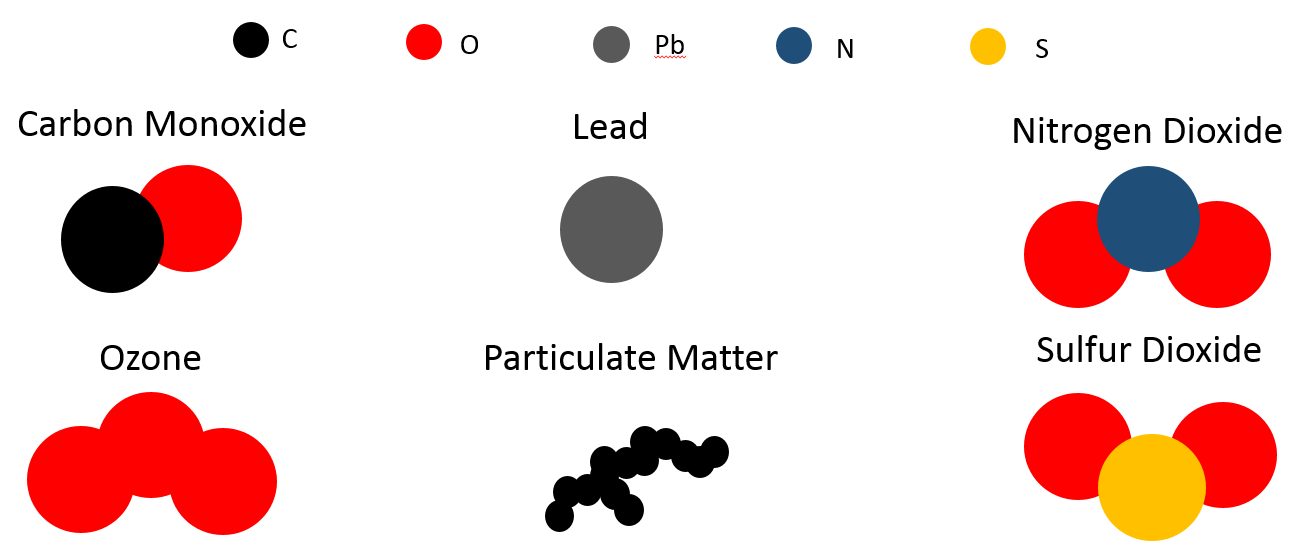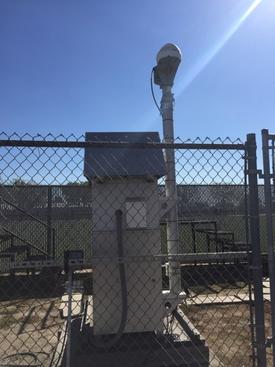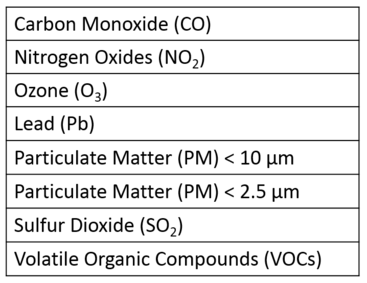Criteria Pollutants and Health Effects
EPA regulates the following criteria pollutants:

- Carbon Monoxide
- Produce from incomplete combustion resulted from insufficient amount of oxygen to oxidize all the carbon in the fuel.
- Occur during high load and rapid vehicle acceleration
- Lead
- Tetraethyl lead (TEL) was added to the fuel mixture and used by earlier model cars. The purpose of the tetraethyl lead additive was to reduce engine knocking, boost octane ratings, reduce wear and tear on valve seats, and improve performance.
- Phase out starting in the 1970s and banned in 1995 to be used as a fuel additive.
- Nitrogen Oxides
- Produce from high temperature combustion and lightning.
- React with peroxy radicals and contribute to tropospheric ozone formation.
- Ozone
- Precursors of ozone in the troposphere are NOx, CO, and VOCs.
- Irritates upper respiratory system and aggravates asthma symptoms
- May cause an increase in premature deaths
- Sulfur Dioxide
- Produce from coal power plants, industrial chemical processes, and vehicle emissions.
- Produce by fuel combustion (gasoline and diesel) and burning of engine lube oil.
- Inhalation causes irritation to the respiratory system, difficult in breathing, and premature death.
- Precursor to sulfuric acid.
- Particulate Matter
- Coarse particles have diameter greater than 2.5 µm and less than 10 µm
- Fine particles have diameter less than 2.5 µm
- Ultrafine particles have diameter less than 100 nm
- Health Effects
- The smaller particles have deeper deposition inside the respiratory system.
- Increase asthma attack and respiratory disease
- Cardiovascular disease
- Can have deposition of carcinogenic substances on the surface
Average Diameter of a human hair = 100 µm → 1000 times larger than an ultrafine particle
Air Monitoring Stations
Generally, ambient air monitoring stations measure
Common air pollutants in California
- Nitrogen Dioxide (NO2)
- Fuel combustion (electric utilities, big industrial boilers, vehicles) and wood burning.
- Worsens lung diseases leading to respiratory symptoms, increased susceptibility to respiratory infection.
- Particulate Matter (PM)
- This is formed through chemical reactions, fuel combustion (e.g., burning coal, wood, diesel), industrial processes, farming (plowing, field burning), and unpaved roads or during road constructions.
- Short-term exposures can worsen heart or lung diseases and cause respiratory problems. Long-term exposures can cause heart or lung disease and sometimes premature deaths.
- Sulfur Dioxide (SO2)
- SO2 comes from fuel combustion (especially high-sulfur coal); electric utilities and industrial processes as well as natural processes like volcano eruptions.
- Aggravate asthma and makes breathing difficult. It also contributes to particle formation with associated health effects.


